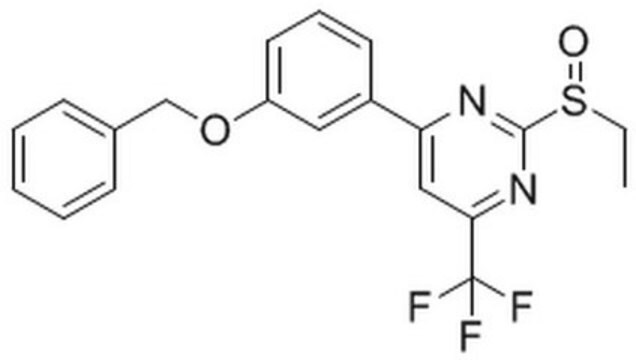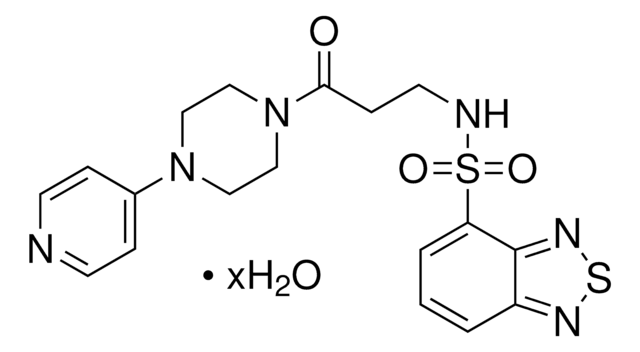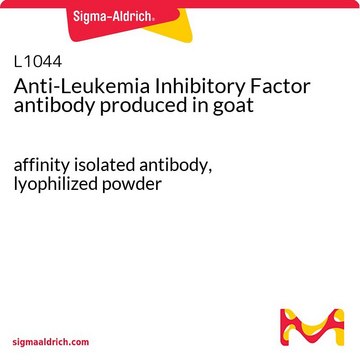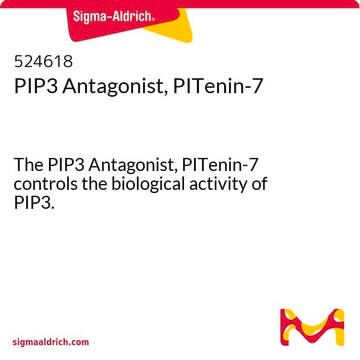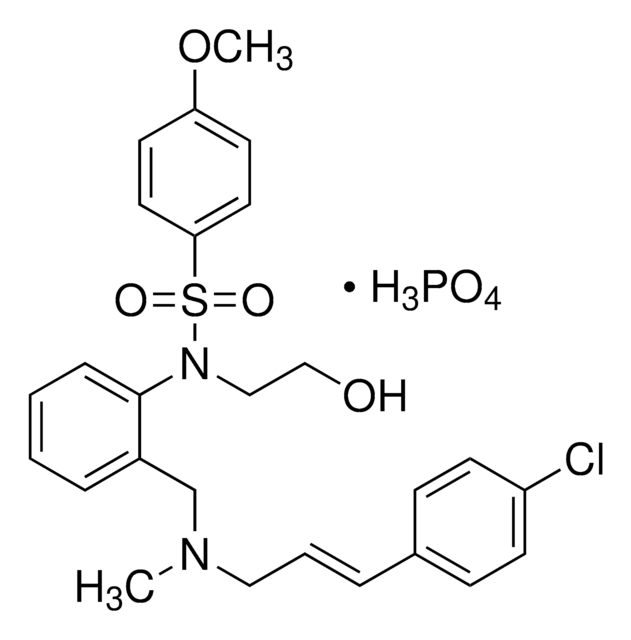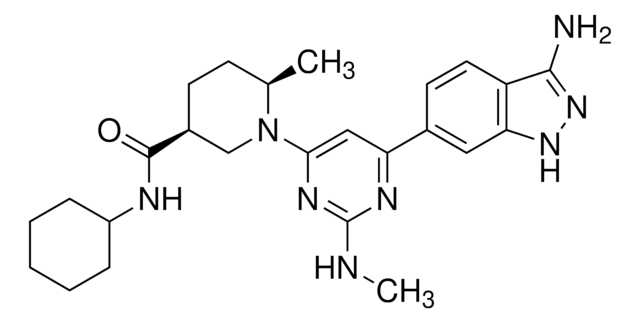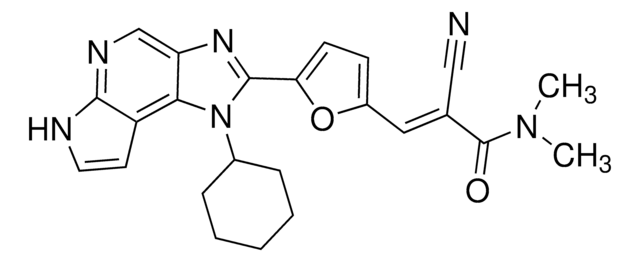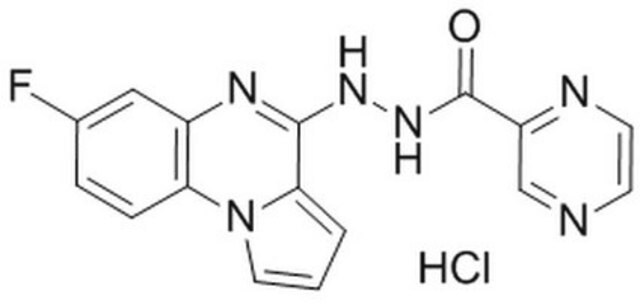346003
Glucagon Receptor Antagonist II
The Glucagon Receptor Antagonist II, also referenced under CAS 191034-25-0, controls the biological activity of Glucagon Receptor.
Synonim(y):
Glucagon Receptor Antagonist II, 2-(4-Pyridyl)-5-(4-chlorophenyl)-3-(5-bromo-2-propyloxyphenyl)pyrrole, L-168,049
About This Item
Polecane produkty
Poziom jakości
Próba
≥98% (HPLC)
Formularz
solid
producent / nazwa handlowa
Calbiochem®
warunki przechowywania
OK to freeze
protect from light
kolor
light beige
rozpuszczalność
DMSO: 45 mg/mL
ethanol: 45 mg/mL
Warunki transportu
ambient
temp. przechowywania
2-8°C
ciąg SMILES
Brc1cc(c(cc1)OCCC)c2c([nH]c(c2)c4ccc(cc4)Cl)c3ccncc3
InChI
1S/C24H20BrClN2O/c1-2-13-29-23-8-5-18(25)14-20(23)21-15-22(16-3-6-19(26)7-4-16)28-24(21)17-9-11-27-12-10-17/h3-12,14-15,28H,2,13H2,1H3
Klucz InChI
HHBOWXZOLYQFNY-UHFFFAOYSA-N
Opis ogólny
Działania biochem./fizjol.
Glucagon Receptor
Opakowanie
Ostrzeżenie
Rekonstytucja
Inne uwagi
Cascieri, M.A., et al. 1999. J. Biol. Chem.274, 8694.
de Laszlo, S.E., et al. 1999. Bioorg. Med. Chem. Lett.9, 641.
Informacje prawne
Kod klasy składowania
11 - Combustible Solids
Klasa zagrożenia wodnego (WGK)
WGK 1
Temperatura zapłonu (°F)
Not applicable
Temperatura zapłonu (°C)
Not applicable
Certyfikaty analizy (CoA)
Poszukaj Certyfikaty analizy (CoA), wpisując numer partii/serii produktów. Numery serii i partii można znaleźć na etykiecie produktu po słowach „seria” lub „partia”.
Masz już ten produkt?
Dokumenty związane z niedawno zakupionymi produktami zostały zamieszczone w Bibliotece dokumentów.
Nasz zespół naukowców ma doświadczenie we wszystkich obszarach badań, w tym w naukach przyrodniczych, materiałoznawstwie, syntezie chemicznej, chromatografii, analityce i wielu innych dziedzinach.
Skontaktuj się z zespołem ds. pomocy technicznej
